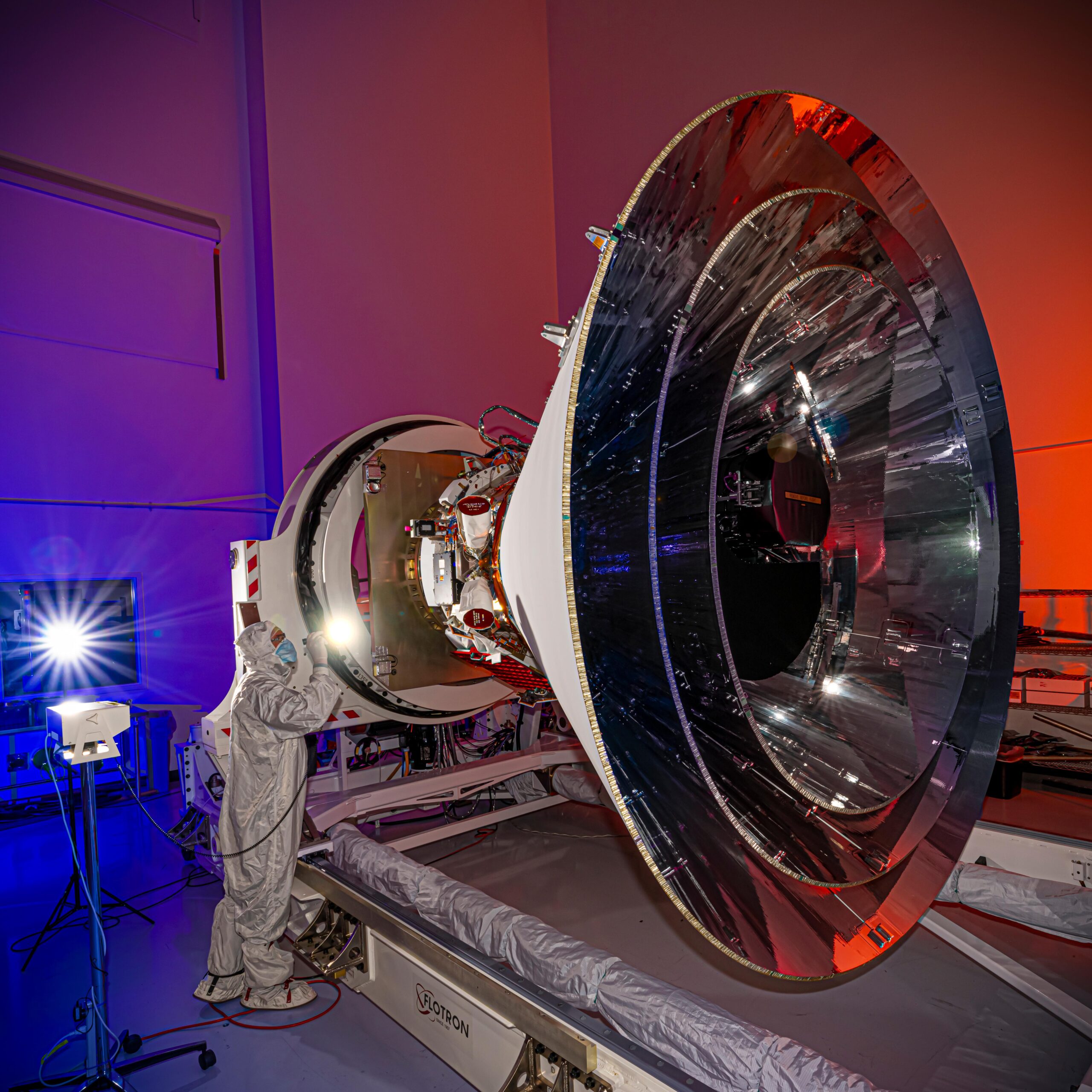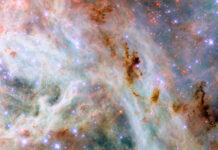Exploring the Universe: NASA’s SPHEREx Mission
In an awe-inspiring development for the world of astronomy and space exploration, NASA’s SPHEREx (Spectro-Photometer for the History of the Universe, Epoch of Reionization and Ices Explorer) observatory has made significant strides in its preparations for its upcoming mission. Captured in a photograph in April 2024, the SPHEREx observatory is seen resting horizontally at the BAE Systems facility located in Boulder, Colorado. This image captures the sophisticated design of the observatory, particularly highlighting its three layers of photon shields, which are arranged as metallic concentric cones.
The SPHEREx mission is poised to embark on a two-year journey, during which it will collect unprecedented data on more than 450 million galaxies and over 100 million stars within our very own Milky Way galaxy. The primary aim of this mission is to delve into the origins of the universe, providing insights into its history and evolution.
Understanding SPHEREx’s Mission
The SPHEREx observatory is a groundbreaking project that aims to map the sky in 96 different color bands, which will allow scientists to create a comprehensive map of the universe. This map will help researchers understand how galaxies form and evolve over time. By examining the light from these galaxies and stars, SPHEREx will offer clues about the conditions of the early universe and the processes that have shaped it into what we observe today.
One of the most exciting aspects of the SPHEREx mission is its exploration of the "epoch of reionization," a period in the universe’s history that occurred roughly 13 billion years ago when the first galaxies and stars began to form. This epoch marks a pivotal moment when the universe transitioned from being a dark, neutral space to becoming filled with light. Understanding this period can provide crucial information about the formation of the first structures in the universe.
Technical Details of SPHEREx
The observatory’s photon shields are a critical component of its design, as they protect the sensitive instruments from unwanted light and heat that could interfere with its observations. These metallic cones are strategically layered to ensure that the observatory can capture the faintest signals from distant galaxies and stars without interference.
SPHEREx is equipped with a state-of-the-art spectro-photometer, a device that measures the intensity of light across a broad range of wavelengths. This technology allows the observatory to detect subtle differences in the light emitted by various celestial objects, which can reveal their composition, age, and distance from Earth.
The Science Behind the Mission
By collecting vast amounts of data from millions of galaxies and stars, SPHEREx will contribute to several key areas of scientific research. One major focus is on understanding the role of ices in the formation of planetary systems. Ices, including water, carbon dioxide, and methane, are essential building blocks of planets and are believed to play a crucial role in the development of habitable environments.
SPHEREx will also investigate the large-scale structure of the universe, helping scientists to test theories about dark energy and dark matter. These mysterious components make up the majority of the universe’s mass and energy, yet remain poorly understood. By mapping the distribution of galaxies across the universe, SPHEREx will provide data that could help unlock the secrets of these enigmatic forces.
Launch and Future Prospects
NASA has scheduled the launch of SPHEREx no earlier than February 27, 2025. As excitement builds for this mission, interested individuals can tune in to a special preview event where agency experts will discuss the mission’s goals and expected outcomes. This event is slated for January 31, 2025, at 12 p.m. EST, and will offer a comprehensive overview of what the SPHEREx mission hopes to achieve.
Broader Implications and Public Engagement
The SPHEREx mission is not only a significant step forward for scientific understanding but also serves as a testament to human curiosity and our desire to explore the cosmos. By uncovering the mysteries of the universe’s origins, SPHEREx will contribute to our knowledge of where we come from and how the universe has evolved over billions of years.
For those interested in staying informed about the mission and its findings, NASA provides various resources and updates through their website. Engaging with these resources can inspire a deeper appreciation for the complexities of the universe and the importance of scientific exploration.
As the launch date approaches, the SPHEREx mission represents an opportunity for people around the world to come together in celebration of scientific achievement and the boundless possibilities of discovery. Whether you are a seasoned astronomer or simply someone with a passion for space, the insights gained from this mission will enrich our understanding of the universe and our place within it.
For more detailed information about the SPHEREx mission and its objectives, you can visit NASA’s official SPHEREx mission page.
For more Information, Refer to this article.

































